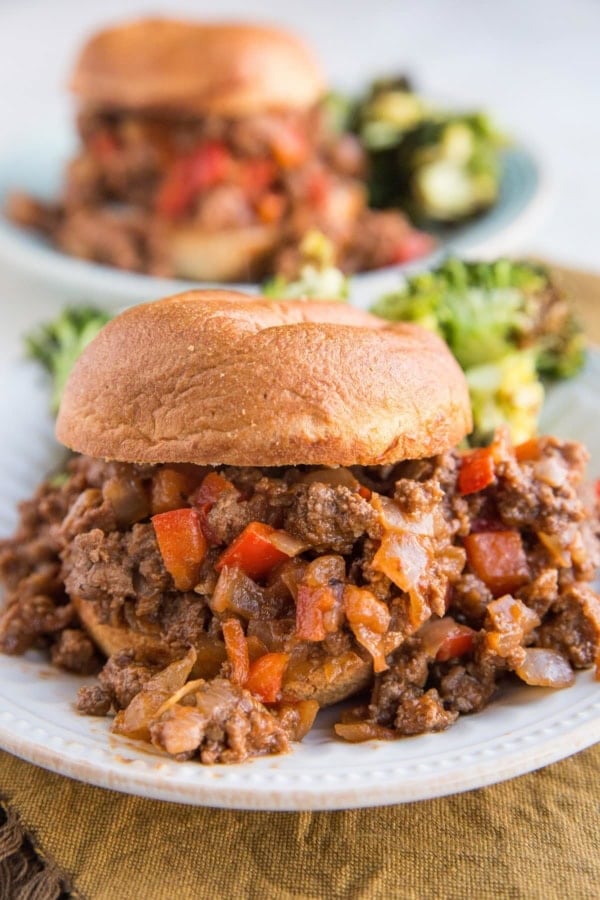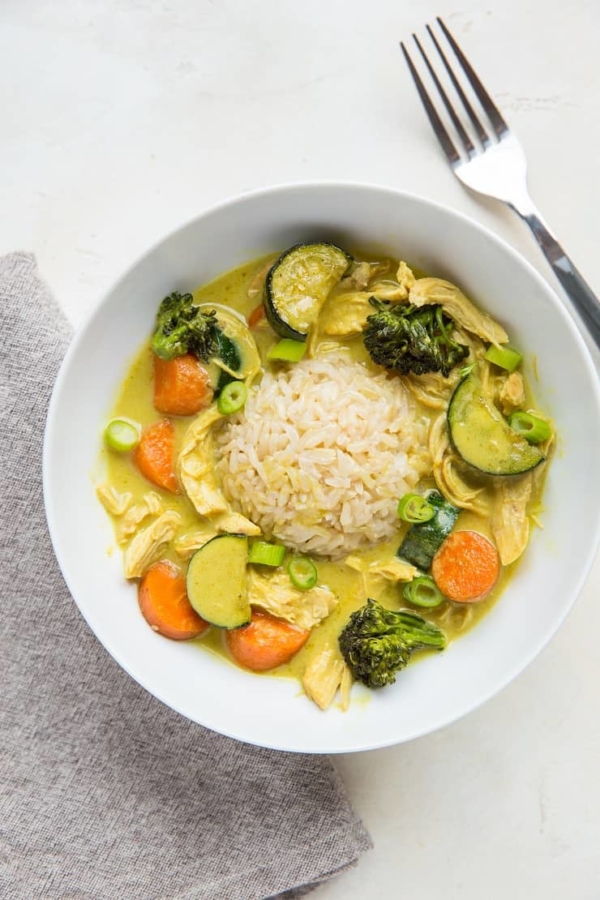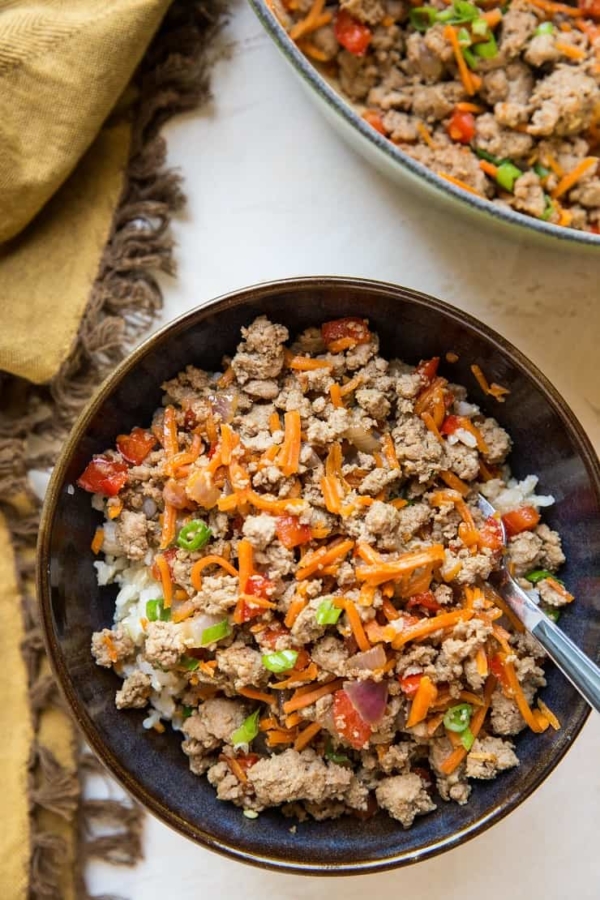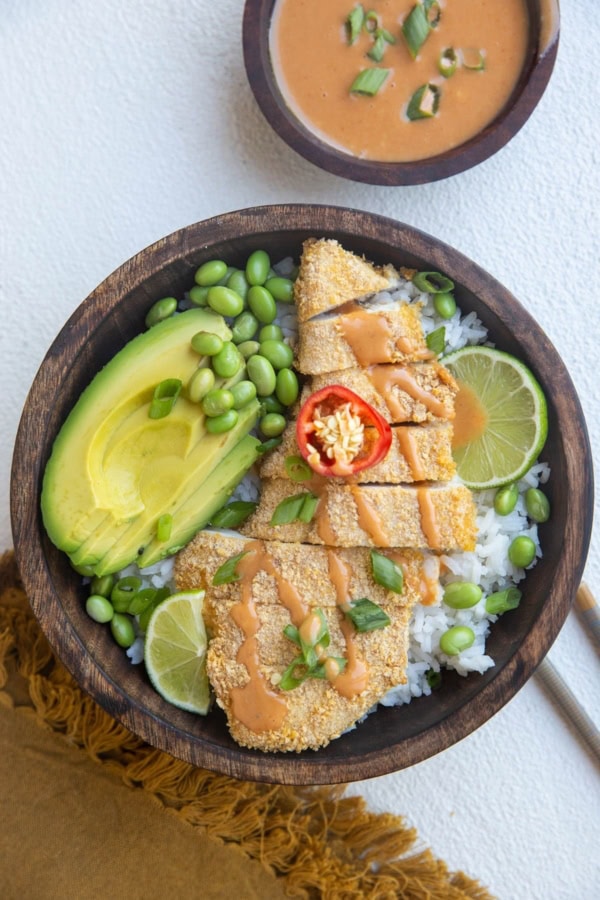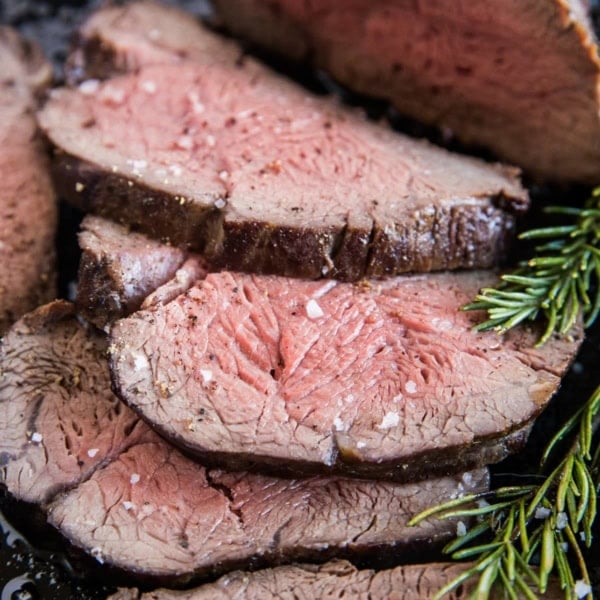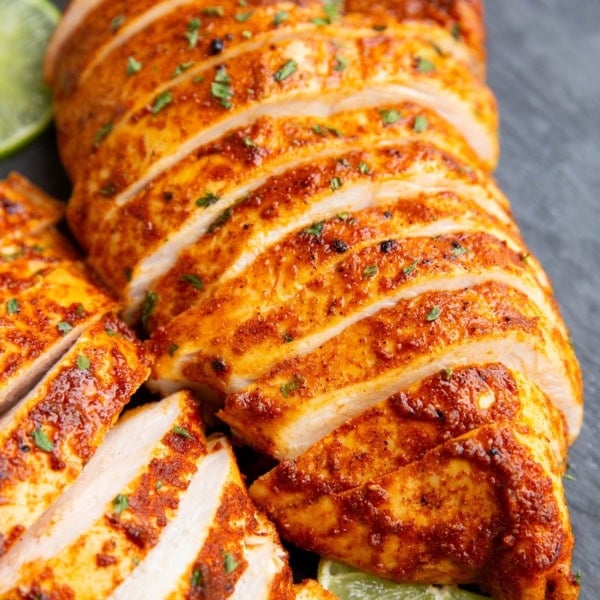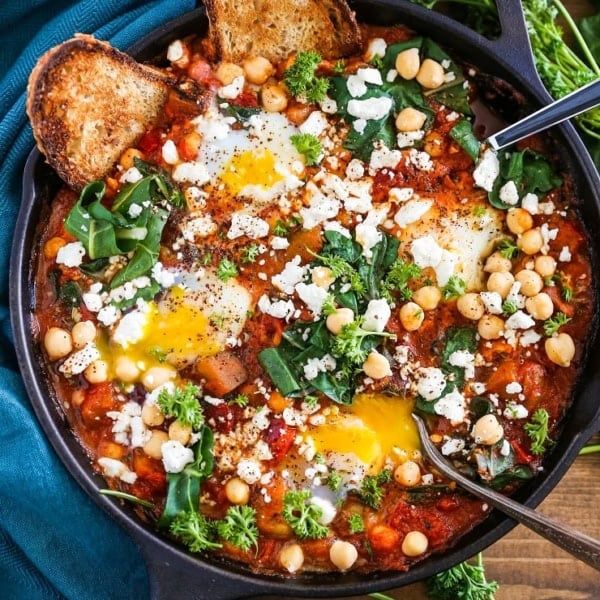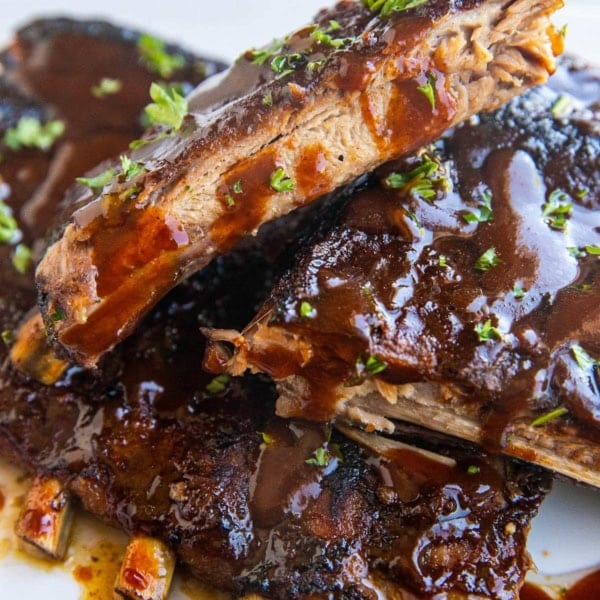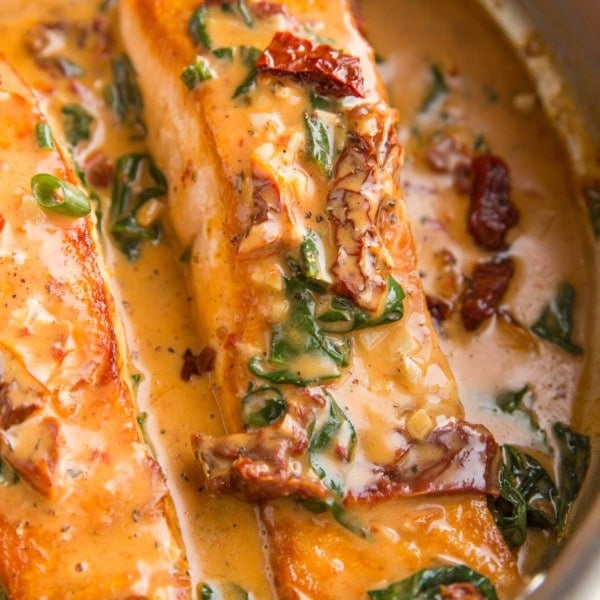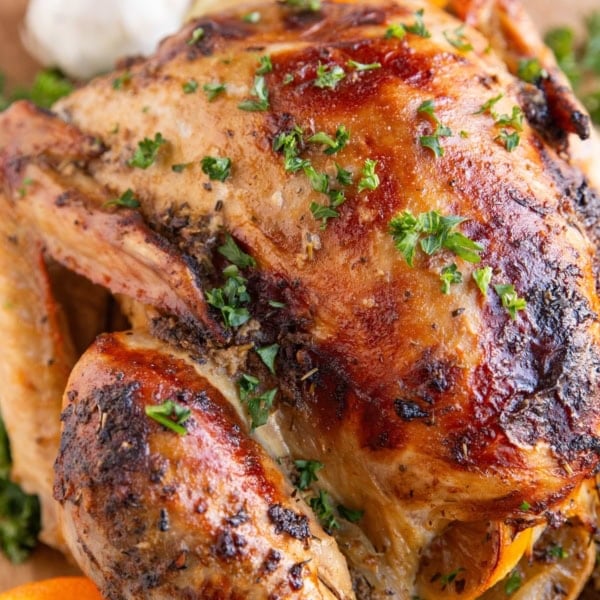Poached salmon makes a delightful main dish and is an ideal cooking method for those who love their salmon perfectly tender. Serve it up with your favorite side dishes for a well-balanced healthy meal.
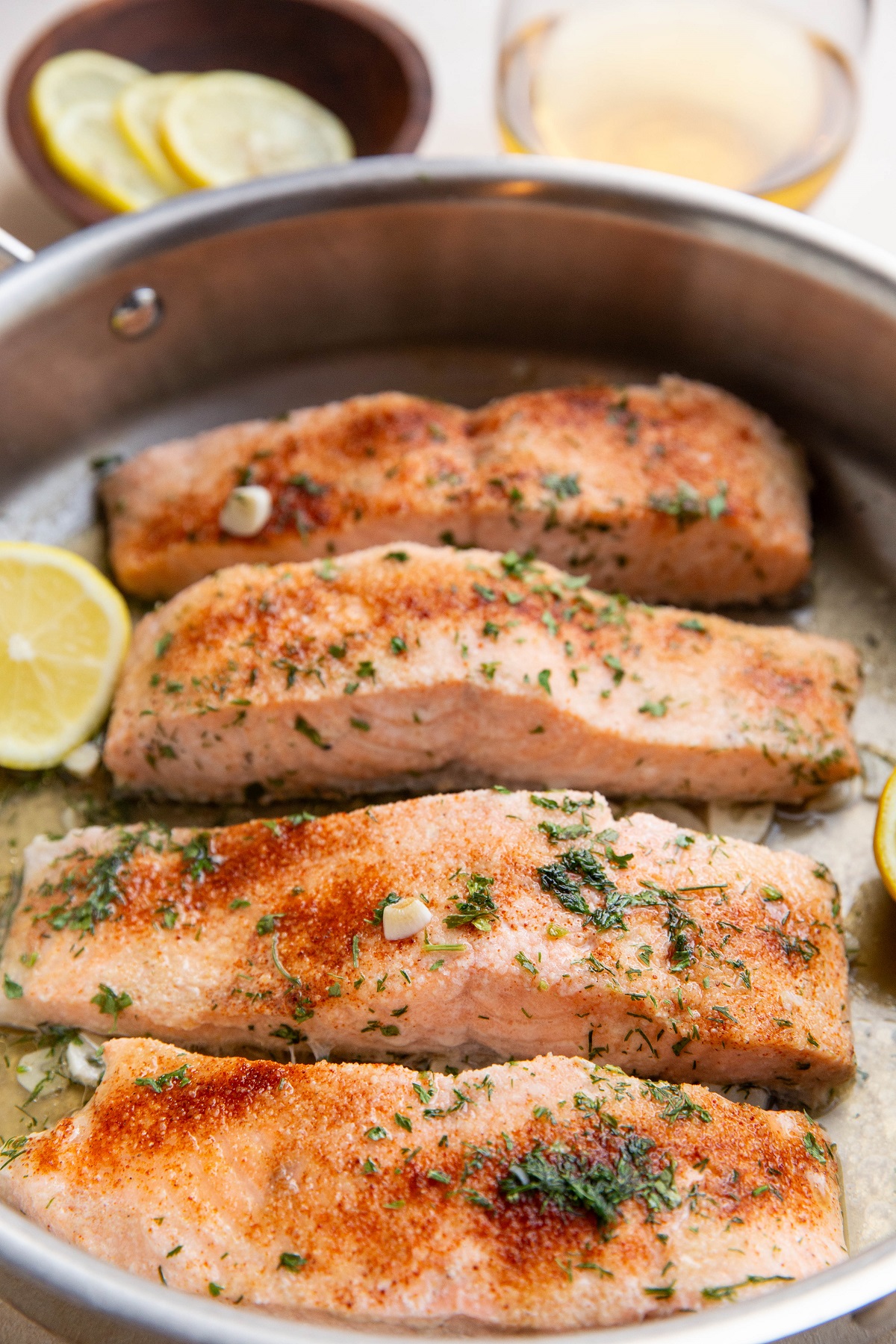
For my fellow crispy salmon lovers, you may question why in the world you would ever poach salmon.
Well.
I hear you and I see you because I’m so wholeheartedly devoted to crispy salmon skin that it was difficult for me to see the benefits of poaching salmon too. That is, until I tried it.
About six years ago, I had poached salmon tacos in Wyoming and was instantly amazed at how boiled fish could taste so good.
The combination of the buttery texture of the fish with gooey melted cheese, a soft tortilla and a little cabbage slaw was just too spectacular to not repeat.
And repeat it, I did! An additional two times over the course of the trip.
If your favorite way of enjoying salmon is medium-rare with tender texture throughout the fish, this easy salmon recipe is for you. Just be sure to use a digital thermometer while you cook the fish to ensure you end up with your desired result.
Not to mention, this quick way of preparing salmon is a game changer for whipping up a healthy dinner in very little time.
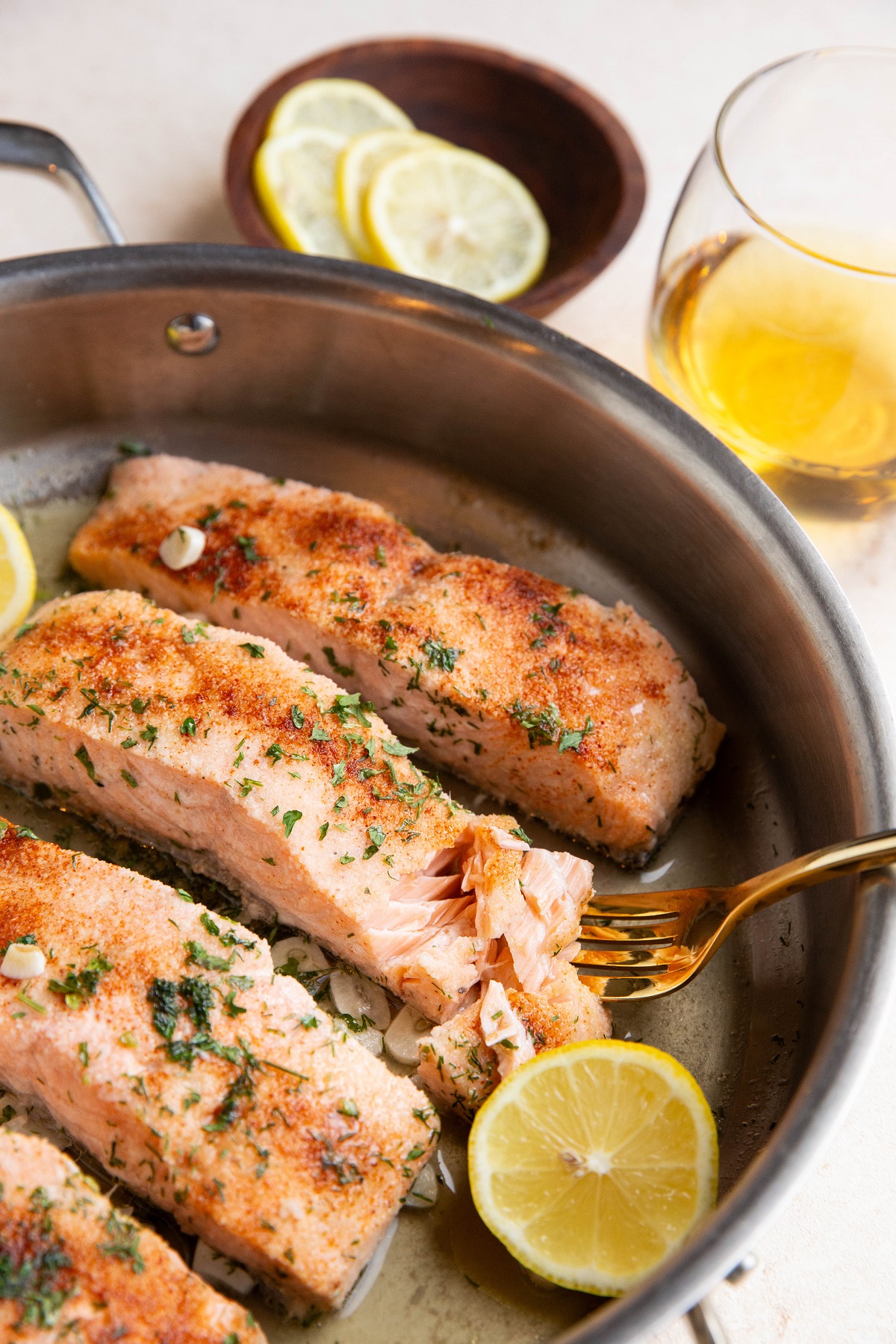
In addition to being one of the easiest ways to prepare salmon fillets, here are my perceived pros for poaching salmon.
Why Poach Salmon?:
You may be wondering why one would want to poach salmon. Valid question.
After poaching salmon, I see three major benefits to using this method over any other method:
1.) There’s no need for cooking oil, which lowers the calories of the meal and eliminates the risk for burnt oil (which is considered toxic).
For instance, olive oil has a low burn temperature which means it reaches its smoke point before salmon has finished cooking in the case of pan-seared or roasted salmon.
2.) You can get a perfect cook by poaching much easier than baking because you have much easier access to the salmon and can therefore check the temperature more often and more rapidly.
Those who love perfectly cooked salmon may find this method preferential because it is less likely you’ll end up with overcooked fish as long as you use an instant-read thermometer.
3.) Cooking salmon to a perfect temperature (around 145 degrees F) maintains the integrity of the protein and omega-3 fatty acids.
Another major benefit to poaching salmon is you can mix it up with all sorts of flavors based on your personal tastes and what you have on hand.
The best part is you can find all the ingredients you need at any grocery store. This cooking method is so simple that you can be an inexperienced cook and still have great success.
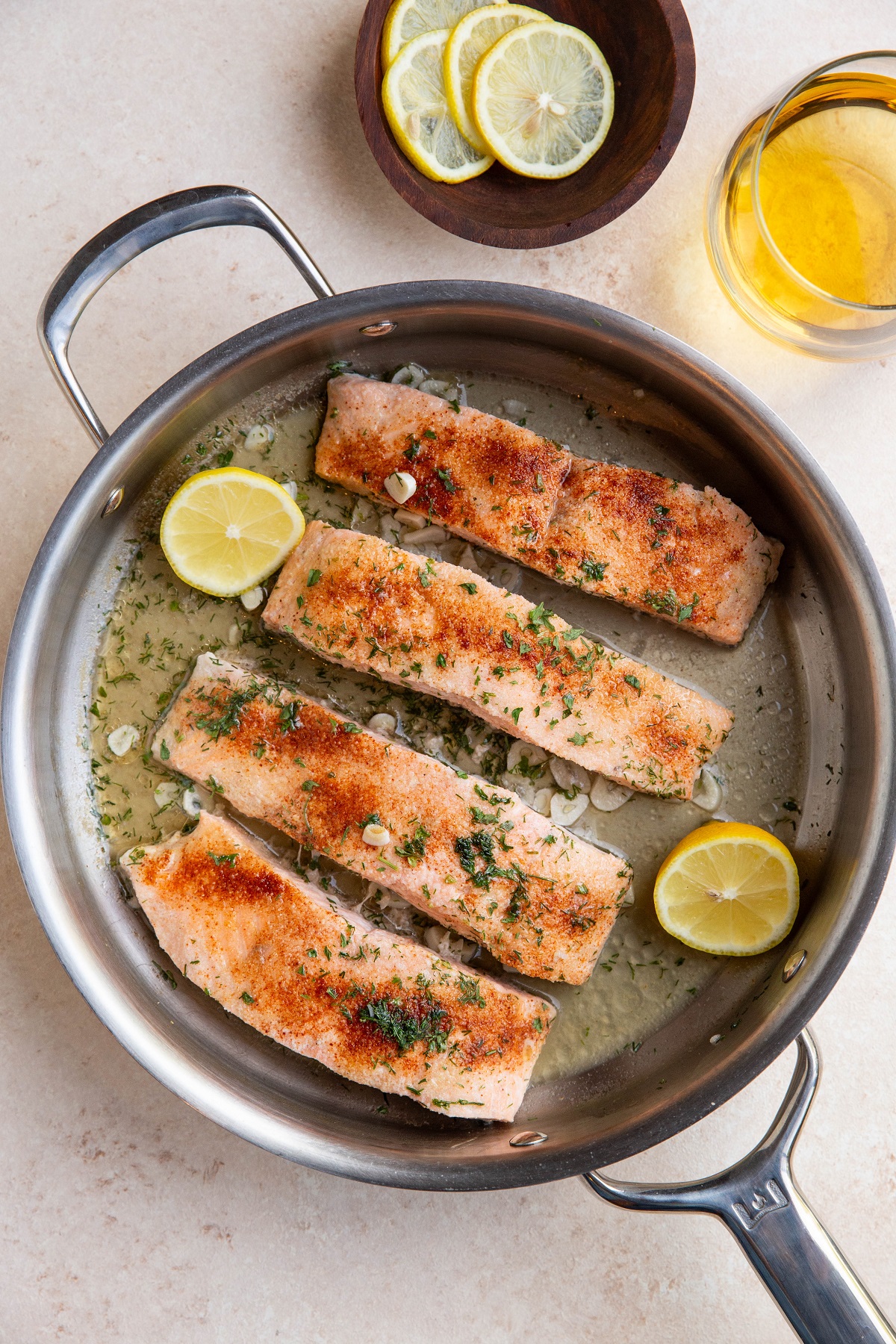
Here are some basic ingredients for poached salmon.
Ingredients for Poached Salmon:
Salmon Fillets: Pick your favorite type of salmon for poaching. I always recommend fatty salmon like wild salmon such as Alaskan King salmon or Atlantic salmon for the best tasting result and the best texture.
That said, any kind of salmon works. If you’re using previously frozen salmon, but sure it is completely thawed before cooking.
If you have a large filet or a whole fish, use a sharp knife to cut it into individual portions. While you can cook larger pieces of fish using the poaching method, I don’t recommend it because smaller filets cook more evenly such that it is easier to achieve a perfect texture.
Water and White Wine: We need some form of liquid to use as the poaching fluid, and I’ve found the combination of water and white wine to be divine.
While you can use all boiling water, the splash of white wine adds a delightful subtle flavor.
Similarly, you could use all white wine for the simple poaching liquid, but I think the wine flavor is too pronounced in this instance. Use a dry white wine such as sauvignon blanc for the best result.
Fresh Garlic Cloves: A few cloves of garlic get a rough chop and tossed in with the poaching broth to infuse it with delicious garlic flavor.
You can also add a chopped shallot or even some chopped yellow onion if you have some extra goodies on hand and want to toss them in for more bright flavor.
Seasonings: Onion powder, paprika, sea salt, and black pepper. The combination of these seasonings provides complementary flavors to salmon so that the flavor of the fish is nice and enticing.
If there are specific spices you love using on salmon, feel free to use them here.
Optional Additions:
- You can also add a few sprigs of fresh herbs like fresh dill, fresh parsley, or fresh oregano to the cooking liquid.
- Zest up one lemon and add the lemon zest to the pot, or add sliced lemon wedges for some citrus flavor.
- Toss in one small bay leaf while the salmon cooks.
- Feel free to add any dried herbs you like, such as dried dill or oregano.
Now that we’ve covered some of the basics, let’s learn how to poach salmon!
How to Make Poached Salmon:
Remove the salmon from its packaging and place it on a cutting board or large plate. Pat off any excess moisture using paper towels.
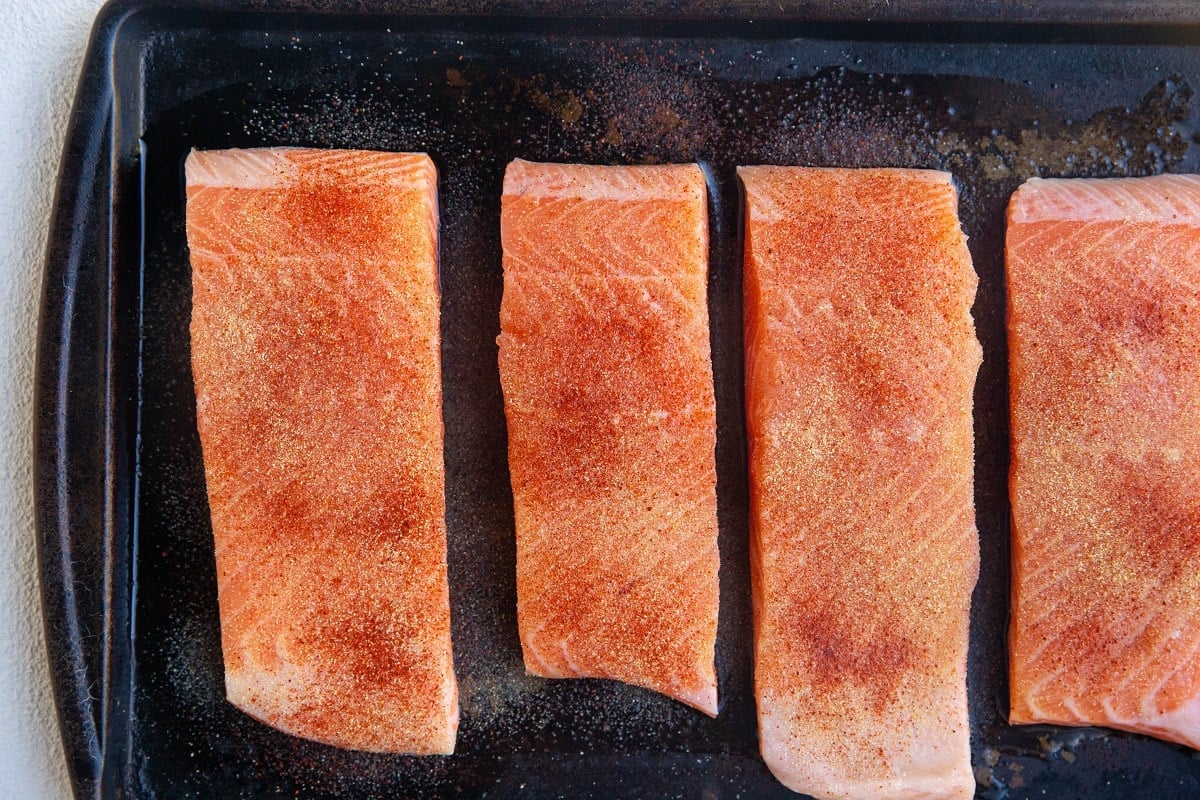
Sprinkle the salmon filets with sea salt, onion powder, black pepper, and paprika. You can season salmon with any other spices you like here.
While you don’t need to remove the salmon skin prior to poaching, you certainly may if you prefer skinless salmon fillets.
Heat the water, wine, and chopped garlic in a large skillet over high heat until it comes to a full boil.
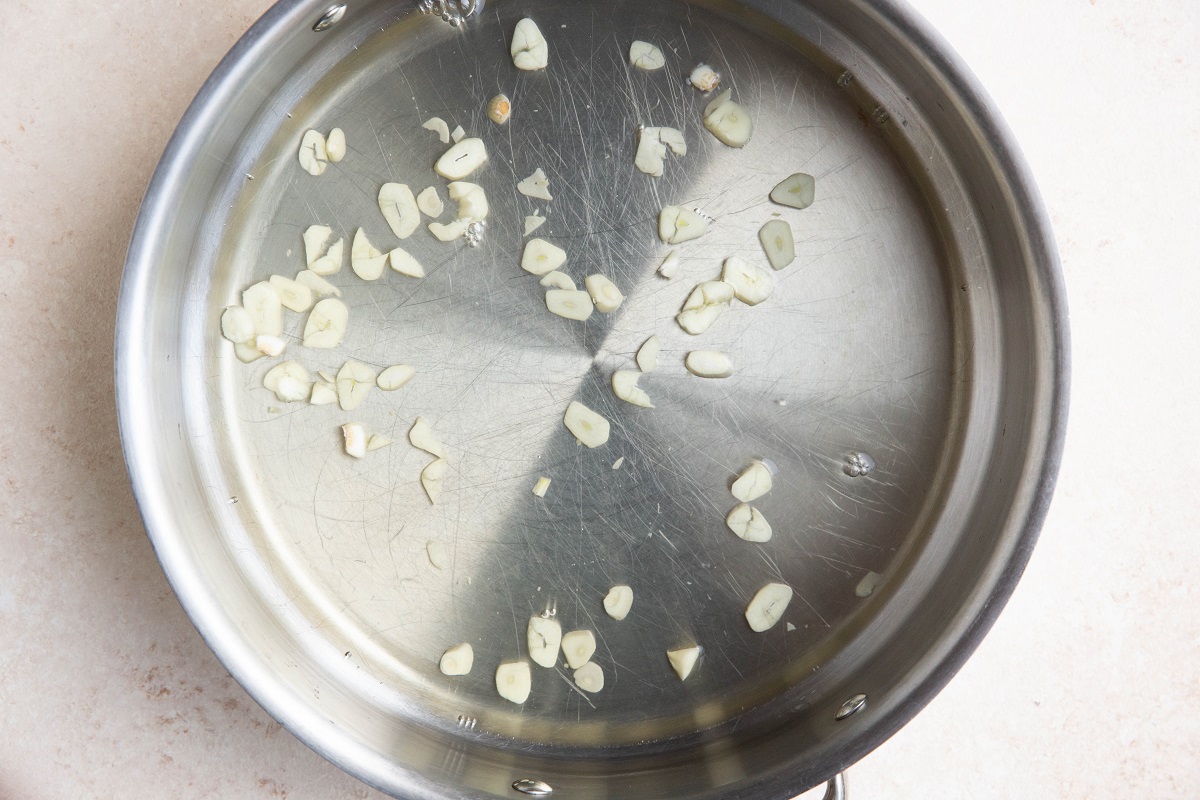
Note: I prefer using a 12-inch skillet for this so that I can fit all four filets in the skillet at the same time and they have plenty of room to cook evenly. This will look like a small amount of liquid, but don’t worry, it is all you need.
Once the water is boiling, carefully place salmon filets in the skillet in a single layer skin side down. Reduce the heat to medium heat or medium-low heat and cover the skillet so that the salmon cooks at a gentle simmer (as opposed to a full boil).
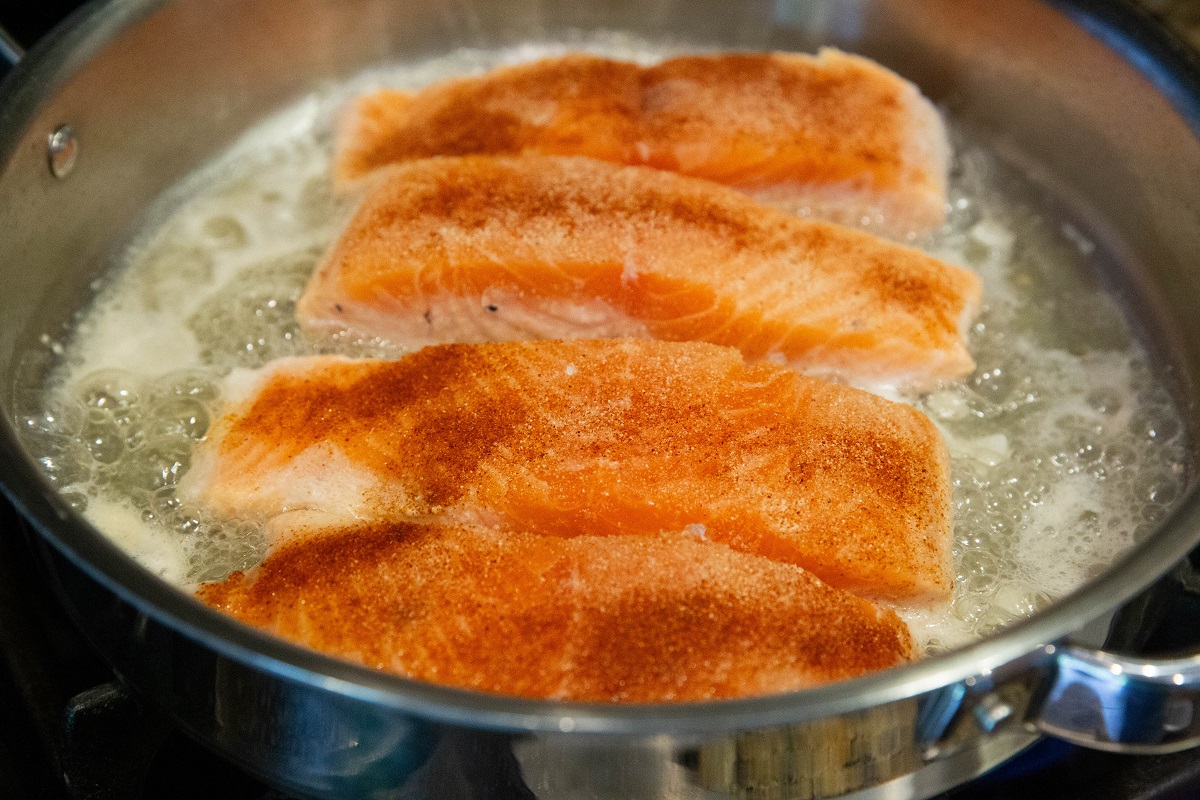
Cook for 5 to 10 minutes, or until the salmon reaches your desired level of doneness (aim for 145 degrees F for fully cooked salmon that still has tender texture).
Thin salmon filets will only need about 5 minutes, whereas thick salmon filets will take about 8-10 minutes.
Insert a meat thermometer into the thickest part of each filet to check the internal temperature of each portion of fish.
The exact cooking time depends on the temperature of the salmon going into the poaching liquid (whether it is chilled from the refrigerator or at room temperature), the thickness of the filet, as well as your personal preference for how it should be cooked.
Immediately remove the skillet from the heat and transfer the salmon filets to separate plates for serving.
Serve salmon with fresh lemon slices and your choice of side dishes, such as Lemon Garlic Rosemary Rice, Garlic Herb Roasted Vegetables, or Caramelized Onion and Roasted Garlic Buttermilk Mashed Potatoes with Parmesan for a complete meal.
I like drizzling my salmon with a little fresh lemon juice. You can also serve salmon with a delicious creamy sauce such as hollandaise sauce, classic dill sauce or my Dairy-Free Dill Sauce if you’d like.
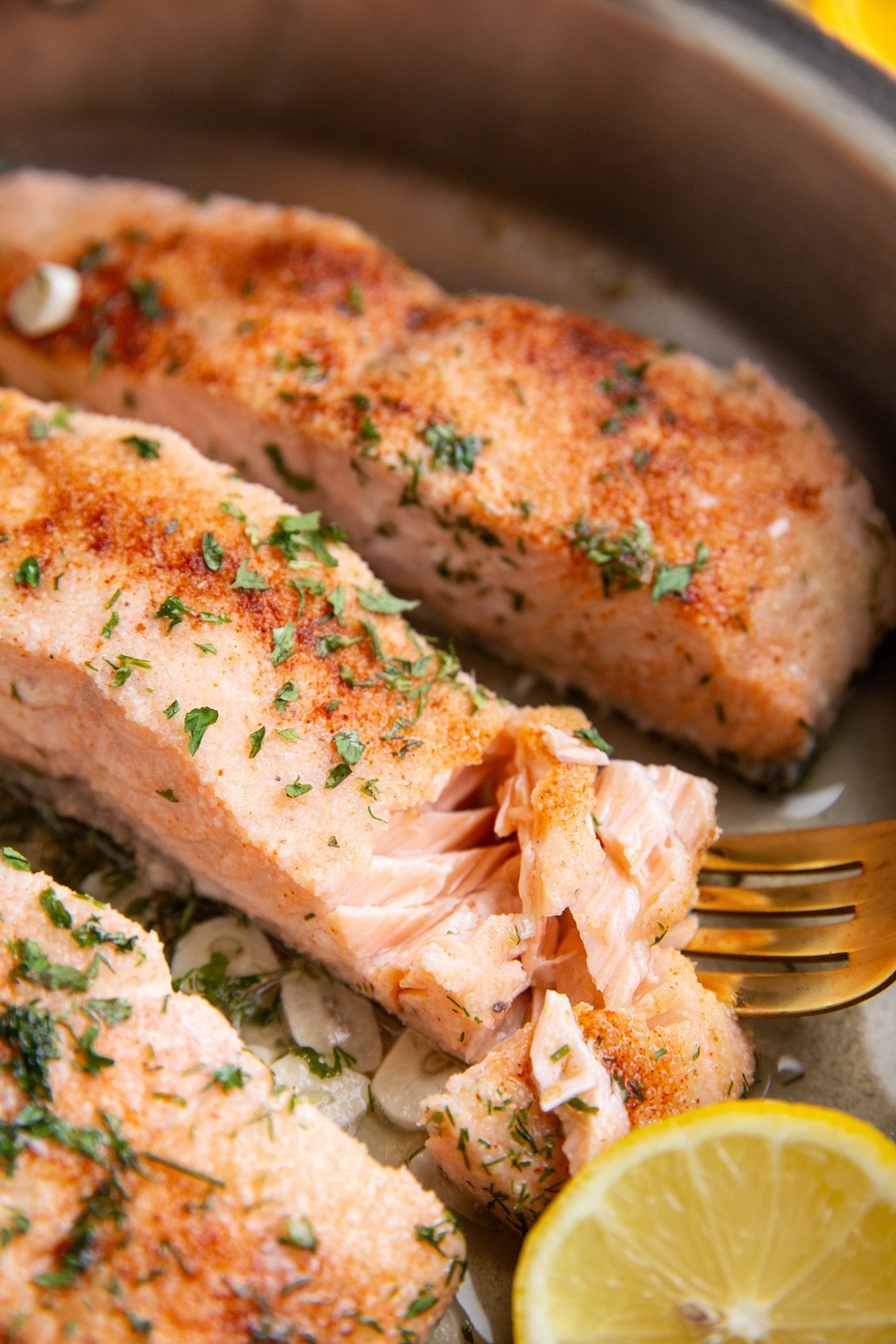
Store leftovers in an airtight container in the refrigerator for up to 4 days.
You can use leftover poached salmon for salmon salad, salmon tacos, or wraps.
Final Cooking Temperature For Salmon:
The FDA considers salmon to be fully cooked once it reaches an internal temperature of 145 degrees F. While this is the food safety recommendation, 145 is overcooked for many salmon lovers who prefer salmon to be medium-rare (about 125 to 135 degrees F).
I always cook my salmon to 145 (or above) because I tend to be very cautious about bacteria and parasites.
That said, if you have access to a quality piece of sushi-grade salmon I don’t see the harm in cooking salmon to medium-rare. Sushi-grade salmon has been frozen at such an extreme temperature that no bacteria or parasites would survive.
Is Poached Salmon Better Than Baked?:
This depends on how you prefer the texture of fish. If you like a crispy exterior, you won’t get that with poached salmon, in which case broiled, baked, or skillet-cooked salmon are better methods.
Poaching salmon is a great way to cook salmon quickly, easily, and achieve a soft and buttery texture. For those who prefer the texture of the fish to be soft and tender, poached salmon is the method of choice.
Is Poaching Salmon Healthy?:
Poached salmon can definitely be considered healthy because it requires no oil and when done correctly it results in a perfect cook, which preserves the structural integrity of the proteins and healthy fats in the fish.
For those who are on a low calorie diet or try to minimize their intake of excess fat, poaching salmon is healthy.
What is the Best Way To Poach?:
Using a large skillet that has a deep lip and comes with a fitted lid is the best tool to use for poaching salmon.
Only about one cup of liquid is needed to poach salmon, so there is no need to bring a large pot of water to a boil. Even a small amount of water is enough water to poach salmon so in this case, less is better.
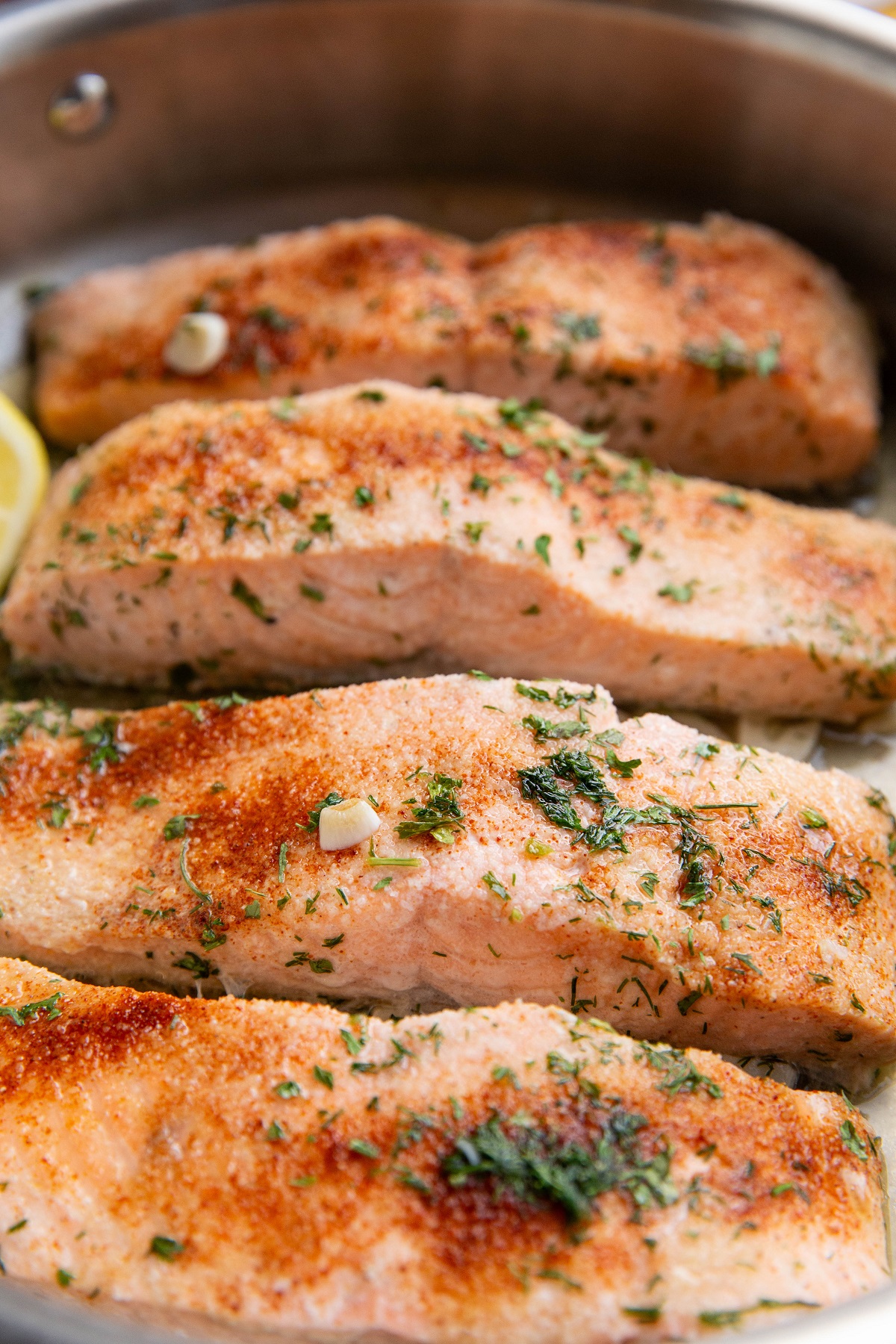
What To Serve With Poached Salmon:
If you’re looking for delicious side dishes to serve with this easy poached salmon recipe, here are some of my favorites.
- Crowd-Pleasing Roasted Vegetables
- Mushroom Risotto
- Roasted Asparagus with Parmesan and Lemon
- Crispy Cauliflower Cakes
- Blueberry Avocado Sunflower Seed Chopped Salad
Poached salmon is one of the best ways you can cook the fish if you enjoy tender, flaky fish. This method of cooking is the simplest way of ensuring the salmon cooks to the perfect temperature so that you’re left with the best results every time.
This simple recipe get dinner on the table in less time and is so delicious that you’ll want to put it on regular rotation and even serve it at your next dinner party.
Looking for more ways to cook salmon? Try out these reader favorites.
More Healthy Salmon Recipes:
- Crispy Skillet Salmon
- Broiled Salmon Recipe
- Grilled Salmon Recipe
- Easy Smoked Salmon Recipe
- Baked Garlic Butter Salmon
- Mediterranean Salmon Salad
The next time you’re craving that buttery salmon experience with soft and tender texture, try this easy poaching method!
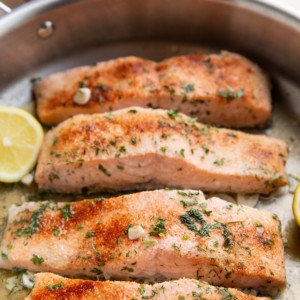
Poached Salmon Recipe
Equipment
Ingredients
- 4 salmon filets about 1.5 to 2 lbs total
- Sea salt and black pepper
- 1 tsp onion powder
- ½ tsp paprika
- 1/2 cup dry white wine
- 1/2 cup water
- 3 cloves garlic minced
- 1 tsp dried parsley
- 1 lemon cut into wedges
Instructions
- Remove the salmon from its packaging and place it on a cutting board or large plate. Pat off any excess moisture using paper towels. Sprinkle the salmon filets with sea salt, onion powder, black pepper, and paprika.
- Heat the water, wine, and chopped garlic in a large skillet over high heat until it comes to a full boil. Note: I prefer using a 12-inch skillet for this so that I can fit all four filets in the skillet at the same time and they have plenty of room to cook evenly. This will look like a small amount of liquid, but don't worry, it is all you need.
- Once the water is boiling, carefully place salmon filets in the skillet in a single layer skin side down. Reduce the heat to medium heat or medium-low heat and cover the skillet so that the salmon cooks at a gentle simmer (as opposed to a full boil). Cook for 5 to 10 minutes, or until the salmon reaches your desired level of doneness (aim for 145 degrees F for fully cooked salmon that still has tender texture). Thin salmon filets will only need about 5 minutes, whereas thick salmon filets will take about 8-10 minutes. Insert a meat thermometer into the thickest part of each filet to check the internal temperature of each portion of fish. The exact cooking time depends on the temperature of the salmon going into the poaching liquid (whether it is chilled from the refrigerator or at room temperature), the thickness of the filet, as well as your personal preference for how it should be cooked.
- Immediately remove the skillet from the heat and transfer the salmon filets to separate plates for serving.
Nutrition
This post contains affiliate links, which means I make a small commission off items you purchase at no additional cost to you.

